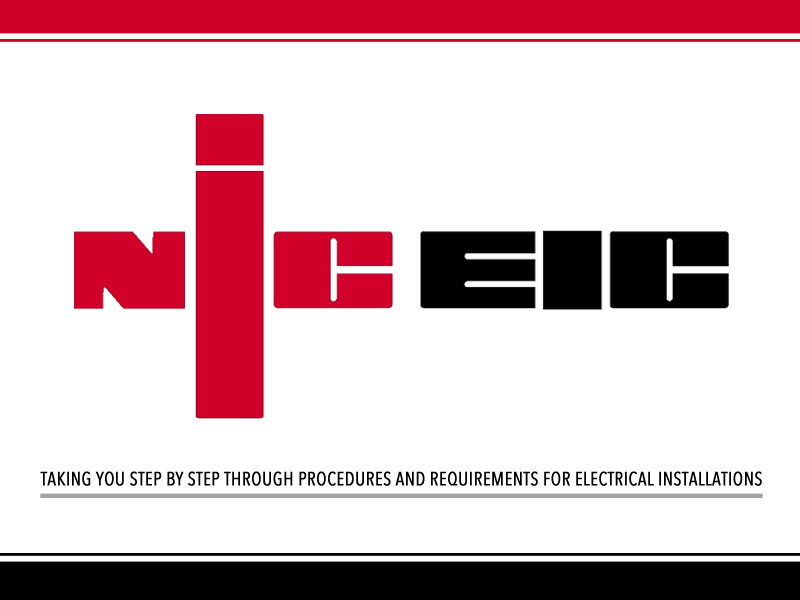
The technical team at NICEIC & ELECSA provide guidance to the contractor when testing RCDs installed to provide additional protection having a 0.25 A (250 mA) residual operating current characteristic.
Chapter 64 of the 18th Edition (BS 7671) outlines the requirements and procedures that should be followed during initial verification or periodic testing and the need to compare the disconnection times obtained from such testing with the relevant disconnection times of Chapter 41 of BS 7671.
However, it has become apparent that some Type A RCDs of rating of 30 mA or less are manufactured such that the maximum break (tripping) time (40 ms) is achieved at a current of 0.25 A (250 mA) rather than at 5IΔn (150 mA for a 30 mA RCD).
This change seems to have caused some confusion and also difficulties in terms of verification in the field.
Information from the product standard
The requirements for RCCBs and RCBOs for household and similar use are in given in BS EN 61008-11 and BS EN 61009-12 respectively.
Limit values of break time and non-actuating time, in seconds, for alternating residual currents (rms) for type AC and A RCCB are given in Table 1 of BS EN 61008-1 and in Table 2 of BS EN 61009-1 for RCBOs.
Note a. to both tables states that the manufacturer may choose a value of either 5IΔn or 0.25 A (250 mA) as the residual operating current required to achieve a disconnection of 0.04 s for a ‘general’ type RCD. A number of manufacturers have now chosen to adopt 0.25 A for their products.
The problems
It has been reported that contractors have experienced difficulties when testing 30 mA RCDs having a 0.25 A residual operating current characteristic. These difficulties seem to stem from the devices being tested at a current of 150 mA, rather than the necessary 250 mA (0.25 A), based on the assumption that using a test current of 5IΔn will always be sufficient to cause the device to operate within the required time (0.04 s). This is not the case.
The note to Regulation 643.8 of BS 7671 which gives the requirements for the verification of an RCD to provide additional protection states that:
NOTE: Effectiveness is deemed to have been verified where an RCD meeting the requirements of Regulation 415.1.1 disconnects within 40 ms when tested at a current equal to or higher than five times its rated residual operating current.
It must be recognised that this guidance was written before the issue with verification of RCDs designed using 0.25 A residual operating current characteristic came to light.
 Nevertheless, BS 7671 acknowledges that, in practice, fault currents are significantly in excess of the rating of the RCD (see the notes to Table 41.1 of Regulation 411.3.2.2 and Regulations 411.4.4 and 411.5.2).
Nevertheless, BS 7671 acknowledges that, in practice, fault currents are significantly in excess of the rating of the RCD (see the notes to Table 41.1 of Regulation 411.3.2.2 and Regulations 411.4.4 and 411.5.2).
It is reasonable, therefore, to use a test current higher than the ‘trip rating’ of an RCD regardless of the application of the RCD.
However, clause 4.2 of BS EN 61557-63, the standard for RCD test instruments, specifies that ‘the measuring equipment shall be capable of indicating whether the fault voltage at the rated residual (operating) current of the protective device is less than or equal to the conventional touch voltage limit’.
This requirement is met in many RCD test instruments by conducting a short duration pre-testing check conducted at half the rated residual operating current selected on the instrument.
Where this is the case, this will invariably result in a failure of this check, as half of even the next standard rating (10; 30, 100, 300, 500 mA) above that of the actual RCD under test will always exceed its rated residual operating current.
The failure of this pre-test check will be indicated by the display of ‘TRIP’ or similar on the instrument’s screen. This will mean that trying to test an RCD by selecting a higher rating on a test instrument having only pre-set values of RCD rating employing this self-test method will not be feasible.
Some RCD test instruments however, have an adjustable residual operating current range allowing a value of 250 mA to be set, eliminating the above issue.
Where there is any doubt about how to use a particular RCD test instrument to verify an RCD designed to operate at 0.25 A the instrument manufacturer should be consulted.
 Verification of an RCD installed to provide additional protection
Verification of an RCD installed to provide additional protection
Where an RCD is installed to provide additional protection, Regulation 643.8 requires that it should be:
● inspected visually to confirm that it has a rated residual operating current (IΔn) not exceeding 30 mA as required by Regulation 415.1.1, and
● tested using a suitable instrument.
Prior to carrying out testing, the test instrument should be set for the appropriate RCD ‘type’.
The person carrying out the testing must identify the operating characteristic of the RCD to determine whether the device should be tested at a current greater than or equal to either 5Δn or 0.25 A as appropriate.
Neither BS EN 61008-1 nor BS EN 61009-1 requires an indication of the operating characteristic to be displayed or visible when the device is installed. It may be necessary therefore to refer to manufacturer’s data to determine this information.
To aid those carrying out testing, a number of manufacturers of devices employing the 0.25 A characteristic are now providing an advisory label explaining this which can be affixed inside the lid of the consumer unit or distribution board in which the RCD is installed.
The testing should be carried out in both the positive and negative half-cycles and the result obtained in each case should not exceed 40 ms; the greater of the two results obtained should be recorded in the appropriate place on the schedule of test results.
Summary
When verifying whether an RCD can provide additional protection care must be taken to ensure that the device is tested at a test current appropriate to the operating characteristic to which the device was designed.
This may make it necessary to refer to manufacturer’s data relating to the RCD under test and, in many cases may mean that the test instrument manufacturer may need to be consulted to determine how best to configure the instrument prior to testing.
Key references
* 1 BS EN 61008-1: 2012+A12: 2017. Residual current operated circuit-breakers without integral overcurrent protection for household and similar uses (RCCBs).
* 2 BS EN 61009-1:2012+A12:2016. Residual current operated circuit-breakers with integral overcurrent protection for household and similar uses (RCBOs).
* 3 BS EN 61557-6: 2007 Electrical safety in low voltage distribution systems up to 1,000 V a.c. And 1,500 V d.c. – Equipment for testing, measuring or monitoring of protective measures – Part 6: Effectiveness of residual current devices (RCD) in TT, TN and IT systems.
Get more details about NICEIC registration by clicking here








